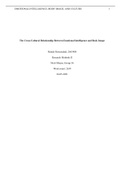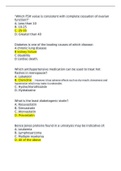Essay
Final Assignment Research Methods II Year 2.5 Psychology
This is the final assignment for the course Research Methods II of the second year of psychology. I received a 7.9 for this assignment. You can use this assignment as an example for your own assignment (copying the assignment or parts of it will lead to an automatic fail) and you can use the rubric...
[Meer zien]





